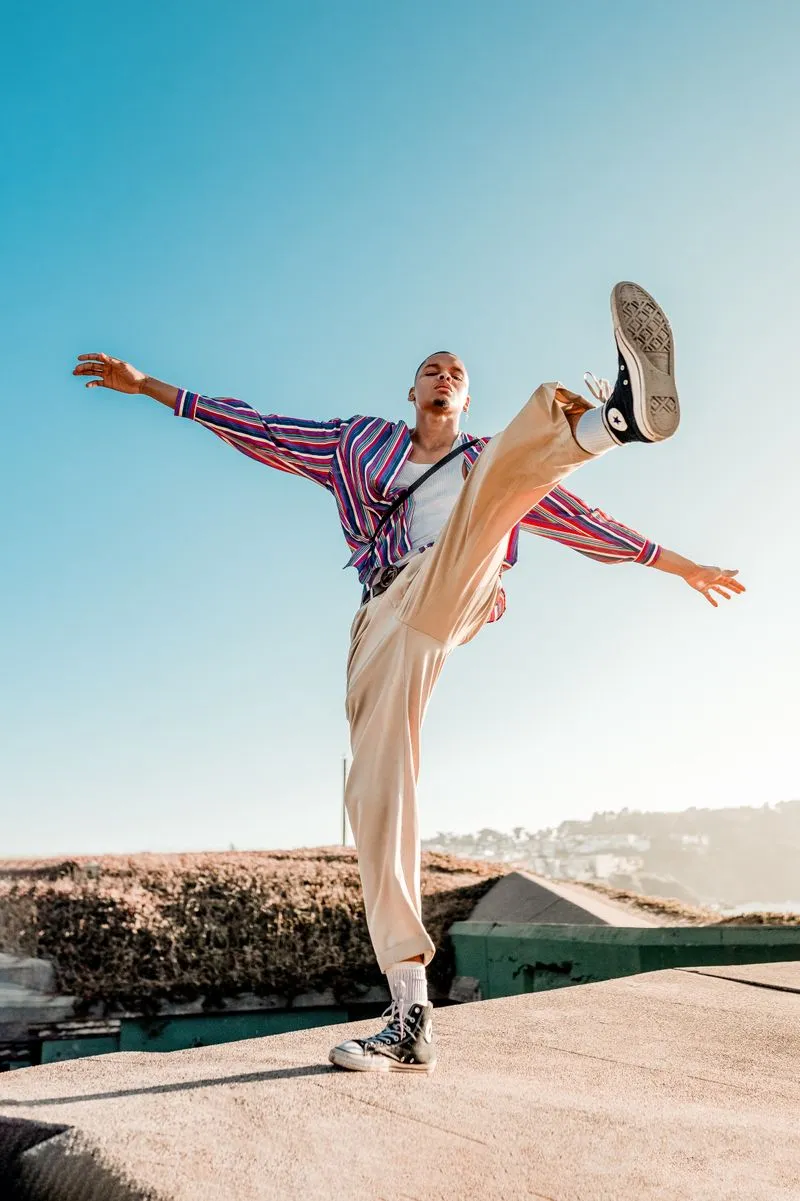
Google 的新生成式 AI 讓你可以在不同的模特兒身上預覽衣服
作者:Kyle Wiggers | Google, ever eager to lean into generative AI, is launching a new shopping feature that shows clothes on a lineup of real-life fashion models. A part of a wide range of updates to Google Shopping rolling out in the coming weeks, Google’s virtual try-on tool for apparel takes an image of clothing and attempts to predict how it would drape, fold, cling, stretch and form wrinkles and shadows on a set of real models in different poses. Virtual try-on is powered by a new diffusion-based model Google developed internally. Diffusion models — which include the text-to-art generators Stable Diffusion and DALL-E 2 — learn to gradually subtract noise from a starting image made entirely of noise, moving it closer, step by step, to a target. Google trained the model using many pairs of images, each including a person wearing a garment in two unique poses — for instance, an image of someone wearing a shirt standing sideways and another of them standing forward. To make the model more robust (i.e., combat visual defects like folds that look misshapen and unnatural), the process was repeated using random image pairs of garments and people. Google’s new AI-powered try-on feature, which taps generative AI to adapt clothing to different models. Starting today, U.S. shoppers using Google Shopping can virtually try on women’s tops from brands including Anthropologie, Everlane, H&M and LOFT. Look for the new “Try On” badge on Google Search. Men’s tops will launch later in the year. “When you try on clothes in a store, you can immediately tell if they’re right for you,” Lilian Rincon, senior director of consumer shopping product at Google, wrote in a blog post shared with TechCrunch. She cites a survey showing that 42% of online shoppers don’t feel represented by images of models while 59% feel dissatisfied with an item they shopped for online because it looked different on them than expected. “You should feel just as confident shopping for clothes online,” Rincon continued. Virtual try-on tech isn’t new. Amazon and Adobe have been experimenting with generative apparel modeling for some time, as has Walmart, which since last year has offered an online feature that uses customers’ photos to model clothing. AI startup AIMIRR takes the idea a step further, using real-time garment rendering technology to overlay images of clothing on a live video of a person. Google itself has piloted virtual try-on tech in the past, working with L’Oréal, Estée Lauder, MAC Cosmetics, Black Opal and Charlotte Tilbury to allow Search users to try on makeup shades across an array of models with various skin tones. Image Credits: Google But as generative AI increasingly encroaches on the fashion industry, it’s been met with pushback from models who say it’s exacerbating long-standing inequalities. Models are largely low-paid independent contractors, on the hook for high agency commission fees (~20%), as well as business expenses including plane tickets, group housing and the promotional materials required to land jobs with clients. And, reflecting biased hiring preferences, they’re pretty homogenous. According to one survey , 78% of models in fashion adverts were white as of 2016. Among others, Levi’s has tested AI tech to create customized AI-generated models. Levi’s defended the tech in interviews, saying that it would “increase the diversity of models shoppers can see wearing its products.” But the company didn’t respond to critics asking why the brand didn’t recruit more models with the diverse characteristics it’s seeking. In the blog post, Rincon stressed that Google opted to use real models — and a diverse range, spanning sizes XXS-4XL representing different ethnicities, skin tones, body shapes and hair types. But she didn’t address the elephant in the room: whether the new try-on feature might lead to fewer photo shoot opportunities for models down the line. To train the generative AI model behind its new try-on feature, Google assembled a data set of models and garments. Coinciding with the rollout of virtual try-on, Google is launching filtering options for clothing searches powered by AI and visual matching algorithms. Available within product listings on Shopping, the filters let users narrow their searches across stores using inputs like color, style and pattern. “Associates can help with this in a store, suggesting and finding other options based on what you’ve already tried on,” Rincon said. “Now you can get that extra hand when you shop for clothes online.” keywords:Fashion-時尚,革命,Google,生成式 AI,模特兒,預覽,服裝
Google 的新生成式 AI 讓你可以在不同的模特兒身上預覽衣服
Google 最近推出了一項新的購物功能,利用生成式 AI 在一組真實的時尚模特兒身上展示服裝。這是 Google Shopping 計劃中的一項全面升級,旨在幫助消費者更好地在網上購物。這項虛擬試穿技術使用 Google 內部開發的基於擴散的模型。擴散模型,包括文字轉換為藝術生成器 Stable Diffusion 和 DALL-E 2,透過逐步從一個完全由噪聲組成的起始影象中減去噪聲,將其逐步移近目標影象,從而預測服裝的穿著效果,包括著地、摺疊、附著、拉伸、褶皺和陰影等。Google 使用許多成對影象來訓練模型,每對影象中都包含一個人以兩種獨特姿勢穿著衣物的影象,例如,一張側身站立的人穿著襯衫的影象和一張面對前方的人穿著襯衫的影象。為了使模型更加固大(例如消除看起來不常規和不自然的褶皺),他們還使用了隨機的影象對來重複這個過程,其中包含了衣物和人的影象。
從現在起,使用 Google Shopping 的美國消費者可以在 Google 搜尋中找到包括 Anthropologie、Everlane、H&M 和 LOFT 在內的品牌的女士上衣,並進行虛擬試穿。而男士上衣將於今年晚些時候推出。Lilian Rincon,Google 消費者購物產品的高級總監,在與 TechCrunch 分享的部落格文章中寫道:“當你在商店試穿衣服時,你可以立即知道它們是否適合你。”她引用了一項調查顯示,42%的網上購物者認為模特兒的形象無法代表他們自己,而 59%的人在網上購物時因為產品不如預期般的外觀而感到不滿意。Rincon 繼續說:“你在網上購物時應該感到同樣有信心。”
虛擬試穿技術的發展與商業和道德的思考
虛擬試穿技術並不是一個新的概念。亞馬遜和 Adobe 等公司早就在生成式服裝建模方面進行了一些實驗,而沃爾瑪則從去年開始提供一項線上功能,使用顧客的照片來展示服裝。AI 新創公司 AIMIRR 更進一步,使用實時服裝渲染技術在人的實時影片上新增服裝影象。Google 自己過去的試驗中也使用了虛擬試穿技術,與 L’Oréal、Estée Lauder、MAC Cosmetics、Black Opal 和 Charlotte Tilbury 等合作,讓使用者可以根據各種膚色試用各種化妝品色調。
然而隨著生成式 AI 在時尚行業中的增長,它也受到了模特兒的反對,他們認為這加劇了長期以來存在的不平等。模特兒通常是低薪的獨立承包商,不僅要支付高額的經紀傭金(約 20%),還要承擔飛機票、團體住房和獲得工作所需的宣傳材料等業務費用。並且,由於在招聘偏好上的偏見,他們的特徵也相當同質化。根據一項調查,在 2016 年時尚廣告中,78%的模特兒為白人。此外一些品牌像 Levi's 則測試使用 AI 技術建立定制的 AI 生成模特兒,並在面試中為這項技術辯護,稱其將“增加顧客看到穿著該品牌的產品的模特兒的多樣性”。然而該公司對於批評者為何品牌未能招募更多符合多樣化特徵模特兒的問題未作回應。
在這篇部落格文章中,Rincon 強調 Google 選擇使用真實的模特兒,並展示了各種不同性別、膚色、體形和髮型的尺碼範圍從 XXS-4XL,以展示消費者多樣性和包容性。然而她並未提及一個有待思考的問題:這項新的試穿功能是否會導致模特兒在未來減少拍攝機會。為了訓練其新試穿功能背後的生成式 AI 模型,Google 組建了一個模特兒和服裝的資料集。與虛擬試穿同步推出的是由 AI 和視覺匹配算法驅動的服裝搜尋過濾選項。這些過濾選項可以在購物產品列表中使用,讓使用者可以根據顏色、風格和圖案等輸入來縮小搜尋範圍。 Rincon 說:“在商店購物時,店員可以根據你已經試穿的東西為你提供幫助,建議其他選擇。”“現在你在網上購物時也可以得到額外的幫助。”
結論
生成式 AI 技術在時尚行業中的應用正日漸增多,這有助於消費者更好地試穿和購買衣物。然而這項技術也引發了一些商業和道德方面的問題。一方面,AI 試穿技術可能削減模特兒的拍攝機會,導致他們的就業機會受到損害。另一方面,該技術需要更多的努力來確保模特兒的多樣性和包容性,避免加劇現有的不平等問題。對於業內的品牌和平臺來說他們應該積極思考如何達到包容性,並為模特兒提供更多的機會。同時監管機構應該與模特兒和相關利益攸關方合作,制定相應的政策和規定,確保 AI 技術的應用符合道德和法律的要求。
延伸閱讀
- Netflix 將建立自己的廣告伺服器挑戰 Google 和 Amazon
- Google 仍未修復 Gemini 偏見影像生成器
- Google 在 Android 上新增實時威脅檢測和螢幕分享保護
- Google 掃描通話的人工智慧或增加預設審查,隱私專家發出警告
- Google 推出新的 Private Space 功能,就像是 Android 版的無痕模式
- Google I/O 2024:Google 剛宣布的所有重大訊息
- Google 發布 AI 動態威脅檢測服務,打擊 Android 惡意軟體
- TC Disrupt 2024 創業藍圖:Builders Stage 議程神祕預覽
- Google 將在桌面版 Chrome 中加入其 Gemini Nano AI 模型
- Google 宣布 Patreon 和 Grammarly 已開始測試 Gemini Nano